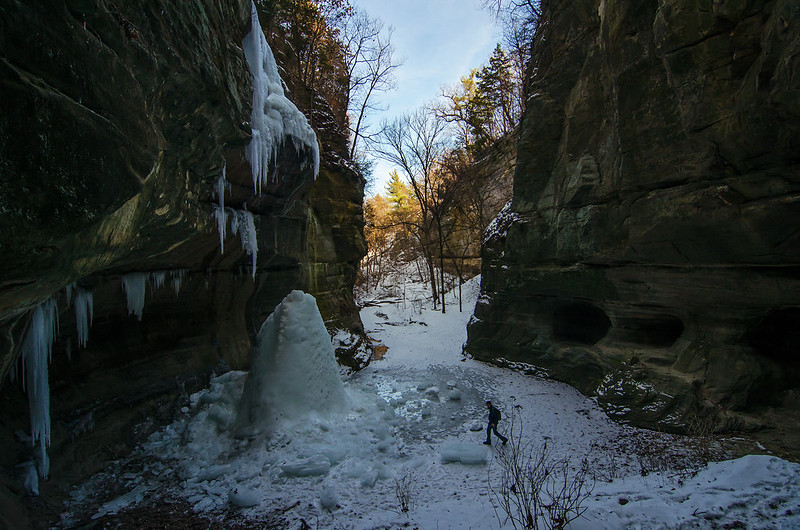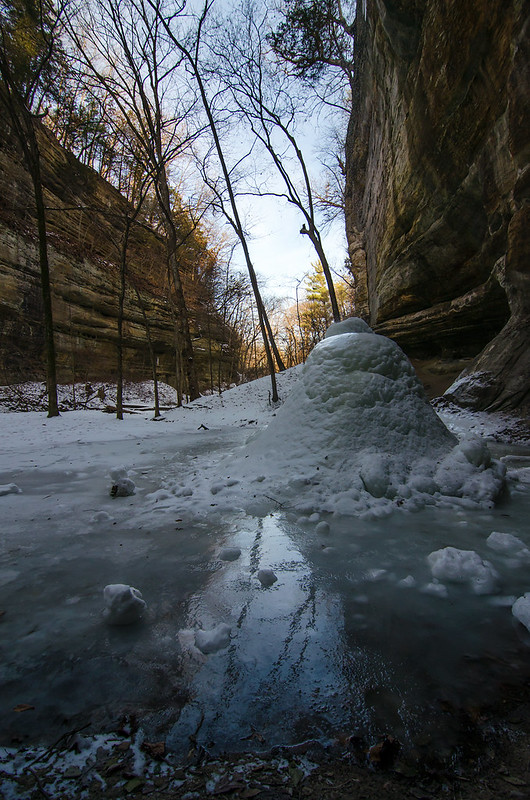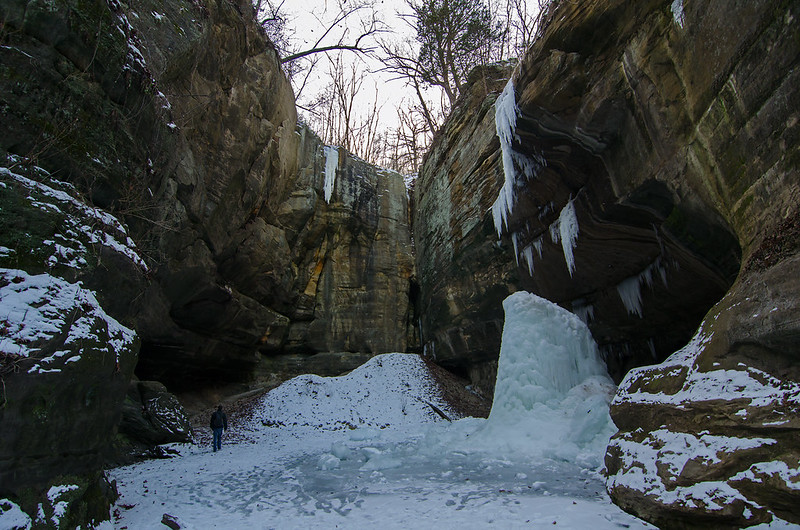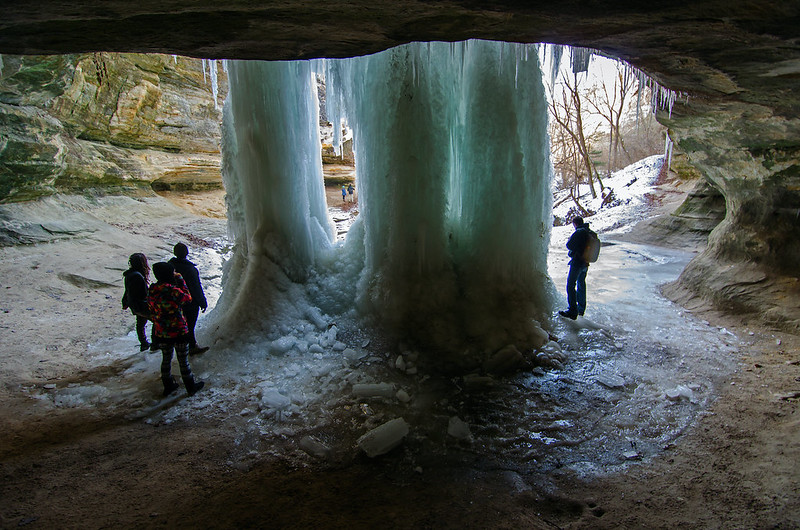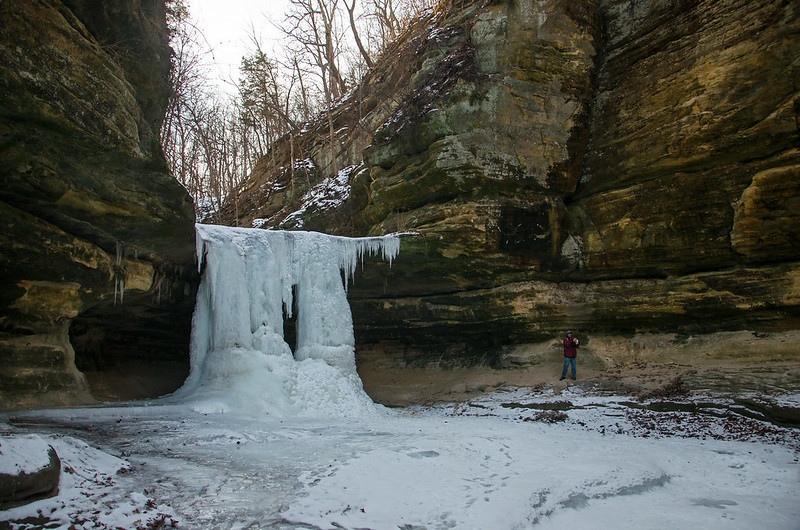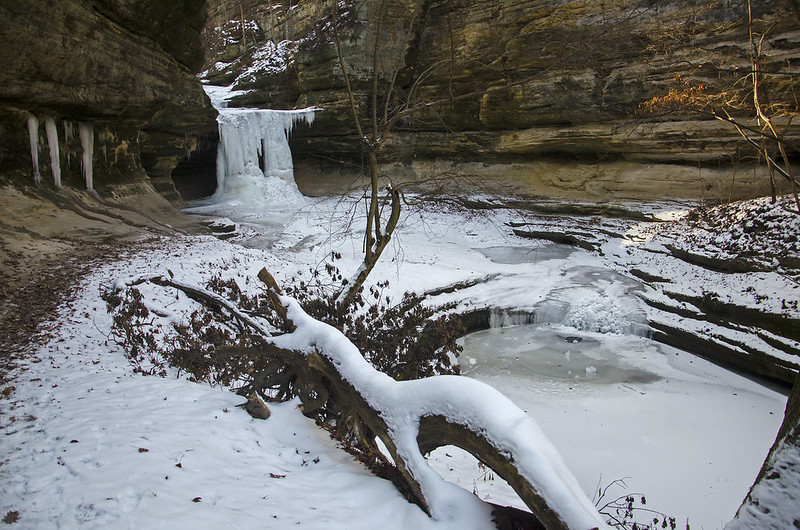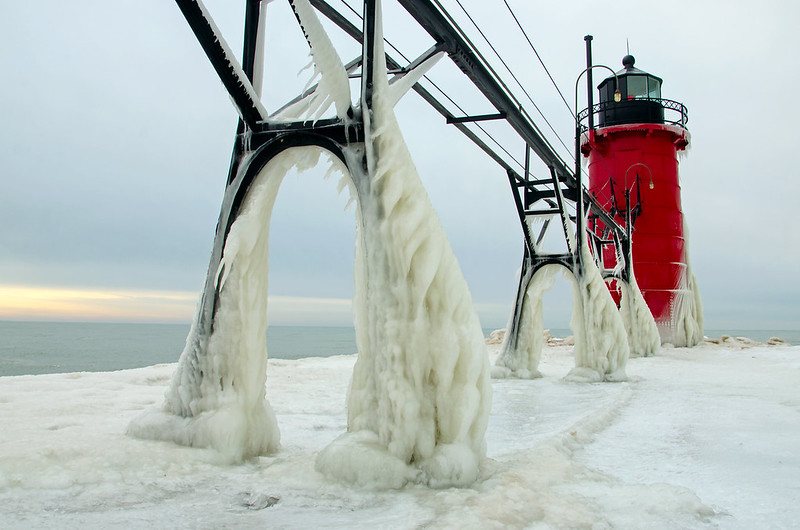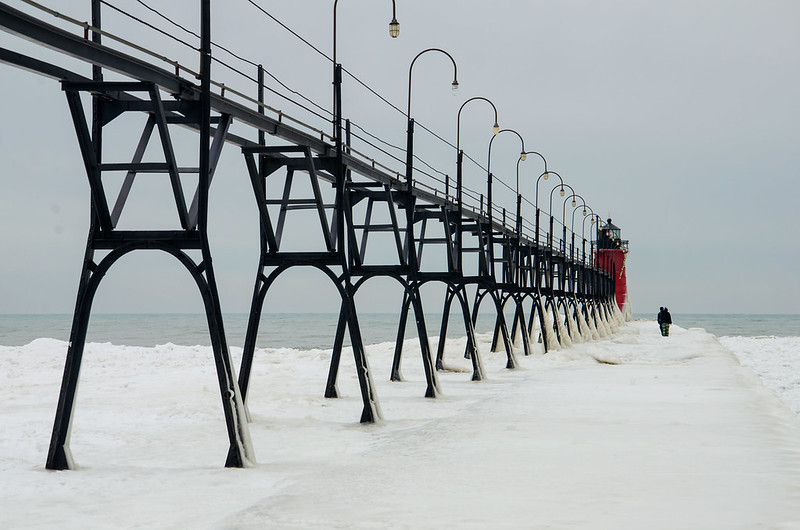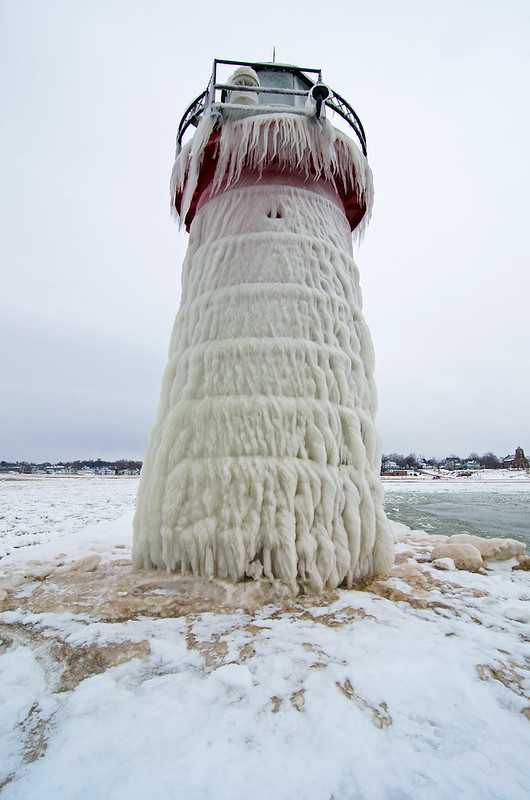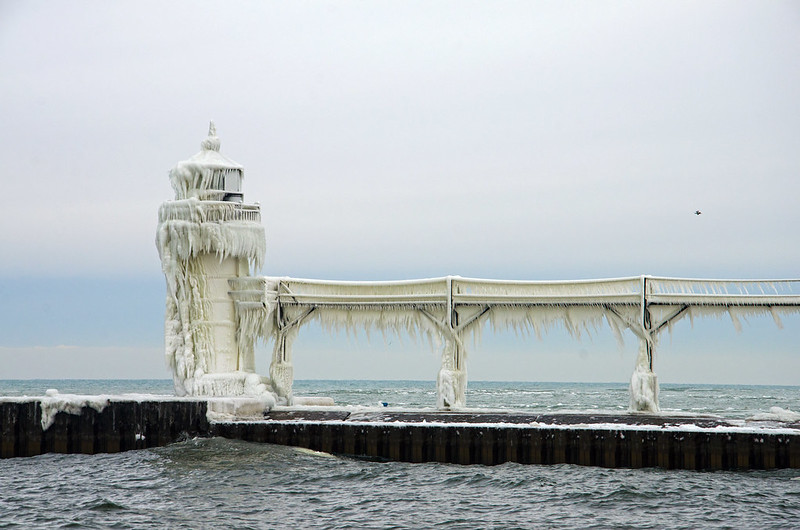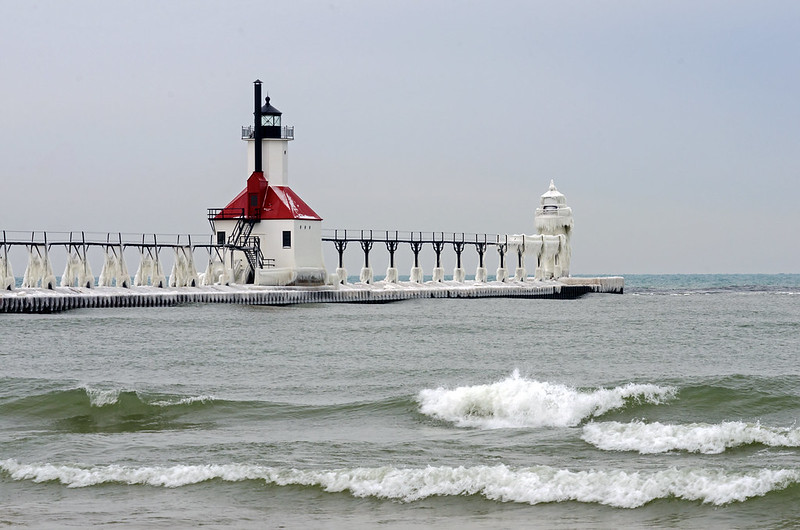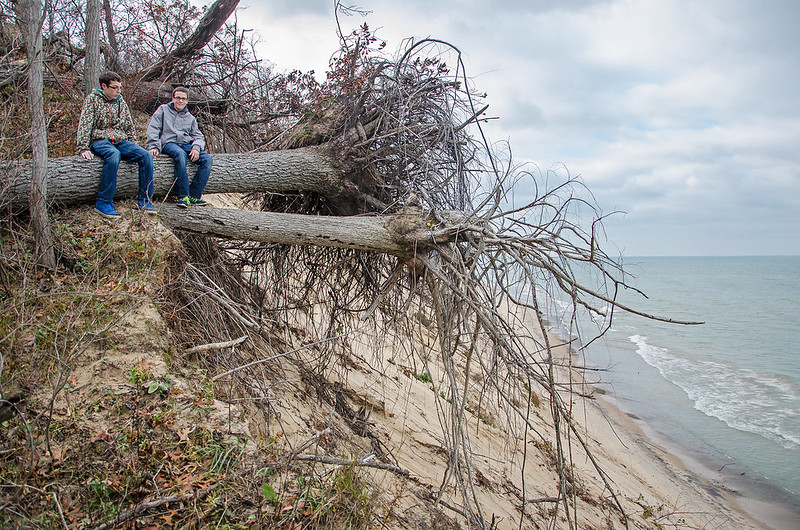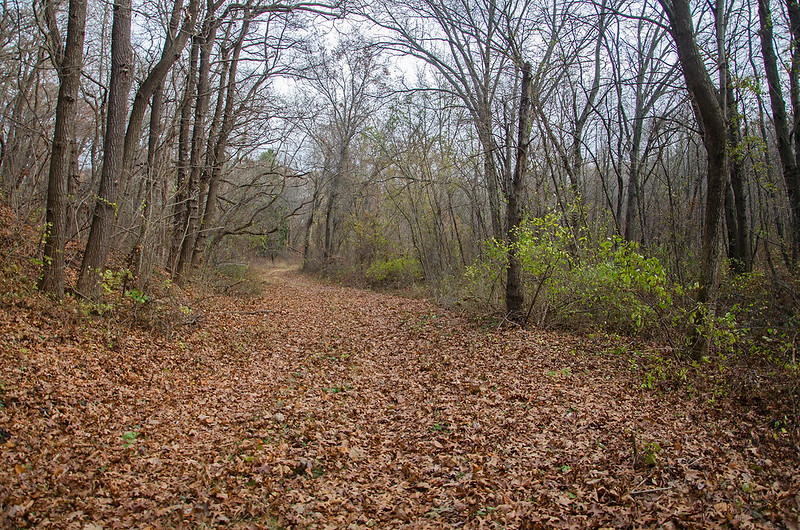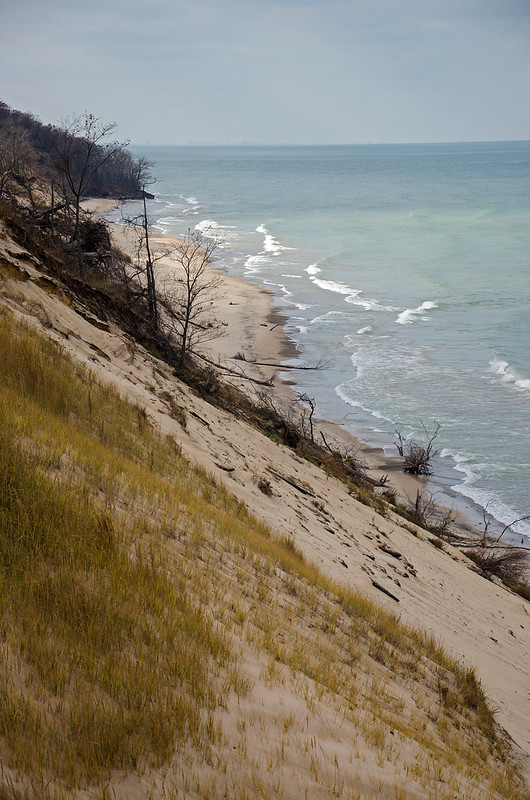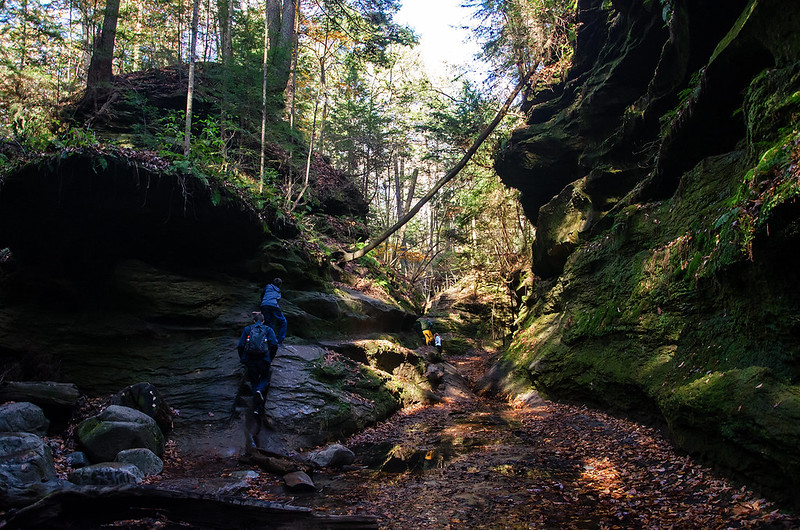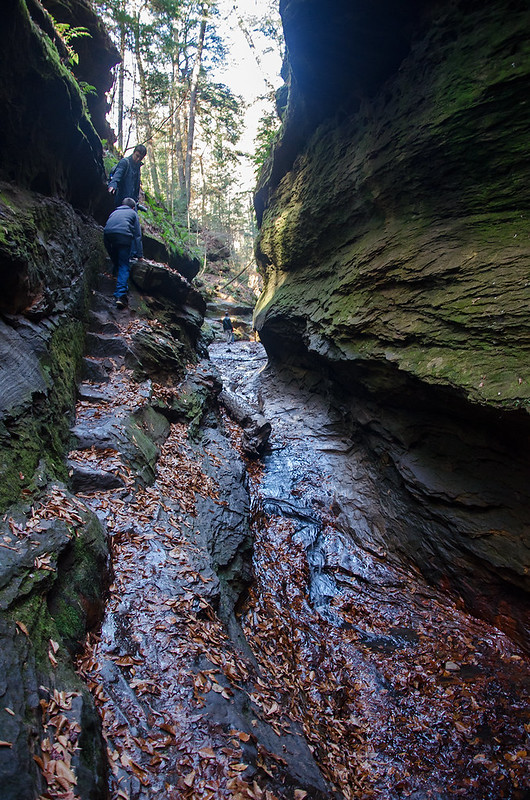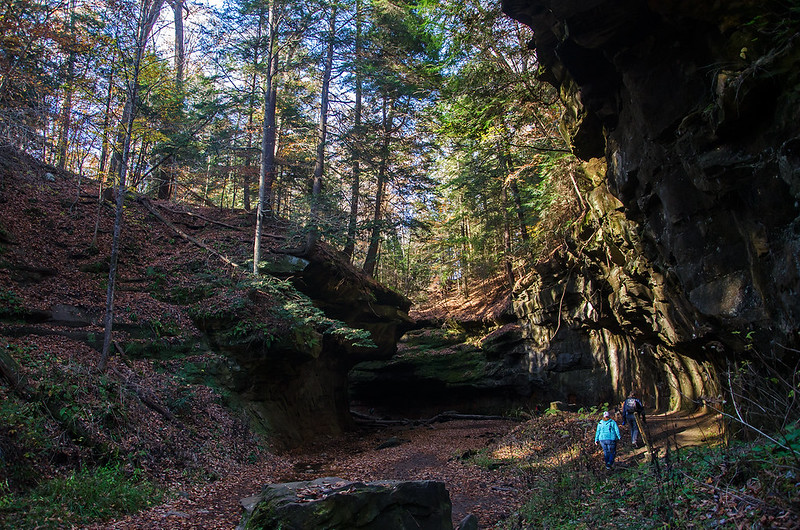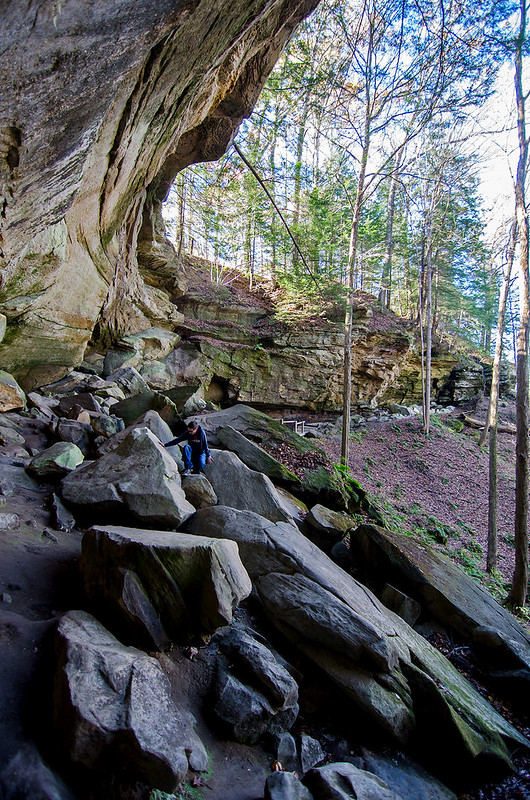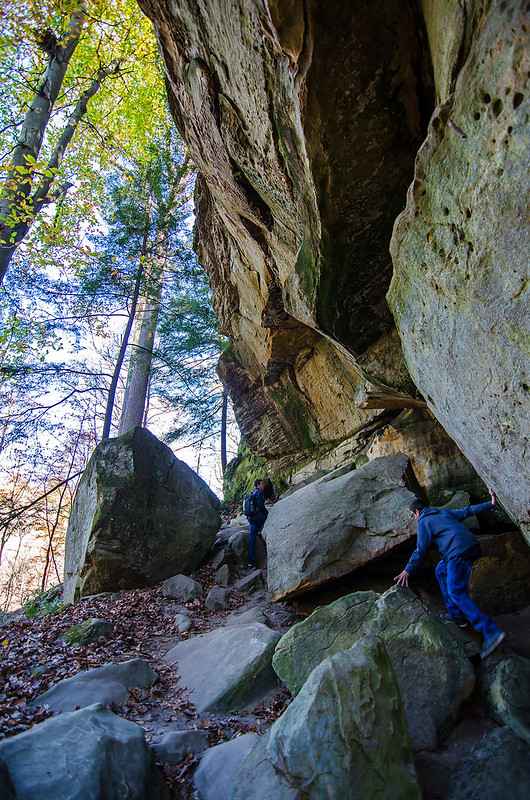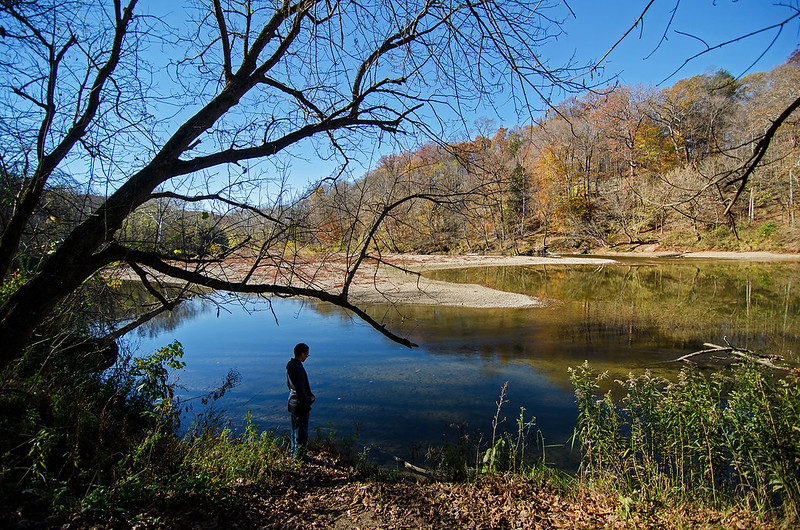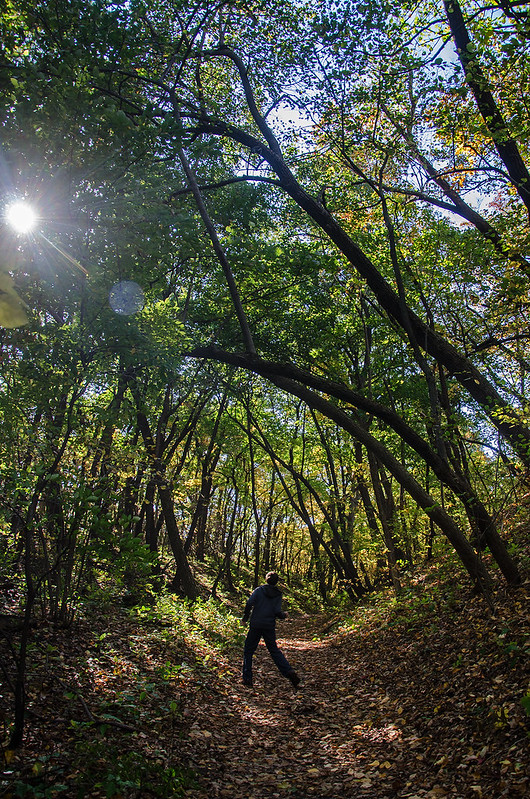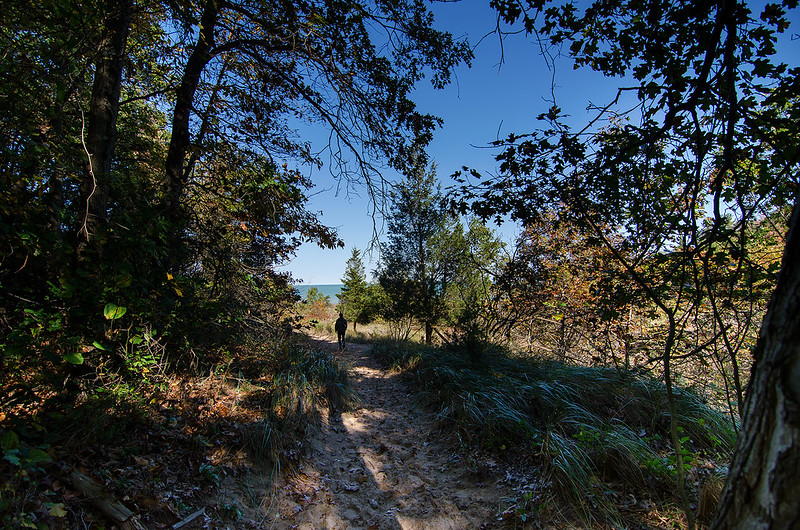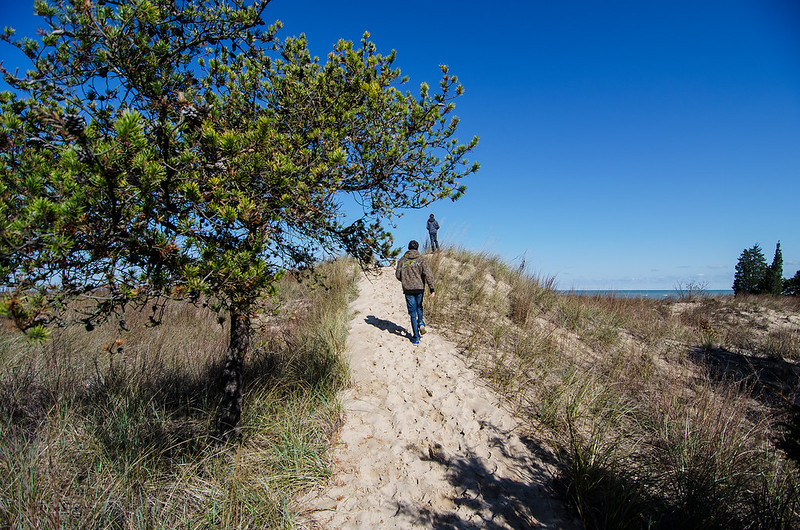
Hiking the trails and canyons of Turkey Run State Park, one finds so many ways to climb or descend to the next level. Trail 3 in particular, offers so many methods of climbing - boulders, slopes, foot-holds, and even ladders.
Following the canyon floor on this rugged trail means traversing waterfalls, and at one point, the waterfalls are just a bit too steep to handle without assistance. Ladders were installed to help hikers, and to save the environment from trampling.
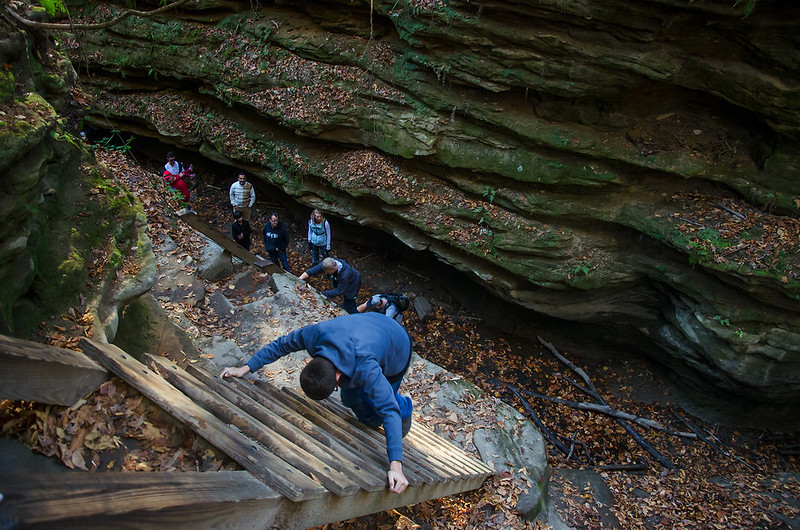
<
Not all visitors are adept at climbing ladders, so on busy days, bottlenecks often occur at the ladders. Making it even more difficult are the visitors with dogs, small children, and the fact that some people want to climb up, and others down.
The wait gives hikers a chance to look around at the small things that might have been missed if they just kept on walking at the same pace. Interesting rock formations, moss, ferns, insects, and other wildlife are everywhere if you take the opportunity to look closely.

In some places, nature provides natural steps in the form of tree roots. Climbing into or out of the Ice Box requires the use of this natural staircase formed by the trees growing in between the rocks. It's steeper than it looks, but in no way does one feel in danger amid the tangle of roots.
Plan to bring waterproof hiking boots on your trip to Turkey Run State Park, they'll provide ankle support, traction on the mossy rocks, and allow you to walk through the shallow steams on the canyon floor.















